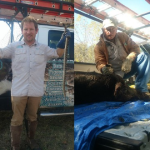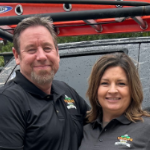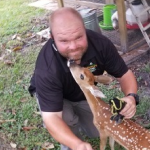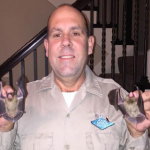Pocket gophers (more commonly known as “gophers”) can be the bane of home owners. With their sharp teeth and claws, they can quickly dig tunnels and burrows that damage lawns, and their incessant gnawing can also cause significant destruction to water and power lines. Gophers use pouches in their cheeks to carry food—hence the name “pocket” gopher.
The pocket gopher, a burrowing rodent, can be a surprising and unwelcome visitor to homes and businesses. These creatures are marvels of underground life but can wreak havoc on your property if not addressed. Learn more about the pocket gopher and how we can help you manage and remove them.
Appearance
General Characteristics
Pocket gophers are robust rodents, recognized for their powerful forequarters and strong, short legs. They possess long, sharp claws that are ideal for digging and are equipped with large cheek pouches – "pockets" – that are used to carry food, hence their name.
Coloration/Patterns/Distinctive Markings
Pocket gophers typically exhibit fur that ranges from dark brown to nearly black, with their undersides being slightly paler. Their small eyes and ears are hard to distinguish due to their fine fur. Their tails are usually hairless and serve as a sensory mechanism when moving backward in tunnels.
Size/Features
Adult pocket gophers usually measure between 6 to 8 inches in length, including their tail. They weigh between 5 to 12 ounces. Their flattened heads and strong necks are essential for their digging habits.
Biology
Digestion and Diet
Pocket gophers are herbivores, primarily feeding on roots, shrubs, and other plants. Their diet allows them to remain mostly underground, reducing the need to surface, which could expose them to predators.
Reproduction
Female pocket gophers typically have one to three litters per year, with each litter containing about five to six young. The young become independent after a couple of months and will establish their own burrowing systems.
Unique Sensory Systems
Despite their small eyes and ears, pocket gophers have keen senses. Their whiskers aid in navigation while their tails provide sensory feedback when reversing in tunnels. They can also detect vibrations in the ground, alerting them to potential threats.
Habitat
Preferred Environments
Pocket gophers prefer loose, sandy soil where they can easily dig and establish their tunnel systems. They are commonly found in grasslands, woods, and farmlands.
Urban Encounters
In urban environments, pocket gophers might be attracted to gardens or landscaped areas because of the abundance of edible vegetation. This is where they often come into conflict with homeowners.
Temperature Regulation
Underground tunnels serve as insulation, protecting pocket gophers from extreme temperatures, both hot and cold. The consistent underground climate is a major factor in their survival.
Behavior
Defensive Mechanisms
When threatened, pocket gophers will hiss, bite, or retreat swiftly into their tunnels. Their strong teeth can inflict painful bites if they feel cornered.
Burrowing Techniques
Their burrowing techniques are efficient, creating intricate tunnels that can be hundreds of feet in length. They often push up mounds of soil at tunnel entrances, which can be a telltale sign of their presence.
Damage/Problems
Diseases
While they don't often carry diseases harmful to humans, they can introduce parasites like fleas to your yard.
Burrowing
Their tunneling can disrupt the integrity of a landscape, causing damage to gardens, irrigation systems, and even building foundations.
Structural Damage
Their penchant for gnawing can lead to damage to underground utility lines, water pipes, or other structures.
Trapping & Removal
Safe Handling
Pocket gophers should be handled with care, using gloves to prevent bites or the transfer of parasites. If you suspect a pocket gopher infestation, it's best to consult professionals.
Relocation
The ideal approach to handling pocket gophers is to trap and relocate them to an environment where they won't pose a nuisance to others.
Deterrence/Prevention
Property Maintenance
Regularly inspecting your property for signs of tunneling or mounds can help detect an infestation early. Reducing their food sources, like certain plants or roots, can also make an area less appealing.
Physical Barriers
Installing underground fencing or barriers can prevent gophers from accessing certain areas.
Exclusion
Professional exclusion techniques, such as sealing off tunnel systems after removal, can deter pocket gophers from returning.
Encountering pocket gophers on your property? Let AAAC Wildlife Removal Services assist you. Our expertise ensures safe and humane removal, helping you restore the peace and integrity of your property. Don't let pocket gophers turn your beautiful landscape into a maze of tunnels. Call us today!



















































